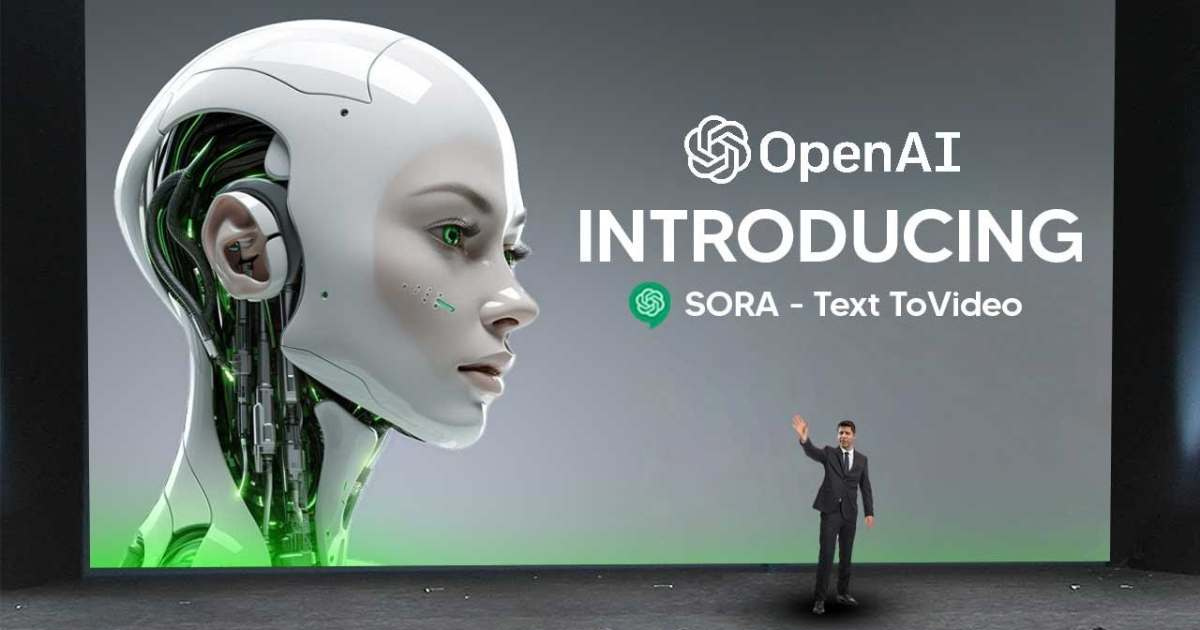OpenAI, the owner of famous AI tools such as ChatGPT and Dall-E, once again resonates with its new tool named Sora. Sora is expected to become a breakthrough in the field of artificial intelligence, opening a new era for the future of generative AI.
So what is Sora? What outstanding features does it have? And will it really bring about the huge changes expected?
What Is Sora?
Sora is a new generative AI model from OpenAI. According to OpenAI, Sora is capable of generating realistic and creative scenes from text. This model allows users to create animated videos up to one minute in length based on the prompts they provide.
OpenAI is trying to use Sora to compete with video-generating AI tools from rivals like Meta, Google, and several other startups. Currently, Sora is only capable of creating videos that are one minute or less in length. OpenAI has not launched any public demos other than the sample videos available on the website.

What Is Sora?
Outstanding Features Of Sora
Before going into Sora's outstanding features, let's see how Sora creates videos from specific commands:
We can see that Sora can create complex scenes with many different characters, settings, themes, and types of movements precisely according to command. It not only understands what users require but also how those things exist in the real world.
When a user enters a prompt, Sora parses the command and generates a sequence of static images. Sora will then use a video generation model to create a movie based on this sequence of still images. Sora has advanced technologies to understand and interpret input text, including semantics, context, and emotion. This allows Sora to create more intuitive and dynamic movements.
Additionally, Sora gives users the ability to customize various aspects of the created video, including visual styles, motion effects, color schemes, and typography. This allows users to tailor the output to their needs and preferences.
What Is Its Limitations?
OpenAI has acknowledged that Sora may have difficulty accurately simulating the physics of a complex scene. It may not understand cause-and-effect statements correctly.
According to them, in some cases, Sora may create videos with logic or physics flaws. For example, in the video of people biting a cookie, the cookie remains intact after biting. It can also cause confusion about left, right, front, and back details.
The groundbreaking nature of Sora also raises concerns about the potential for abuse. Videos created that are too realistic can be used to spread misleading content, violate privacy, discriminate against people, etc. Although OpenAI has banned the use of Sora to create harmful content, the company has not yet found a way to recognize AI-generated images and real images for labeling and classification.
Sora has the potential to transform content creation, but it also has the potential to disrupt roles and workflows across different industries. Professionals in fields such as video production and graphic design, as well as content creation, could be at risk of being replaced as AI takes over tasks typically performed by humans.

What Is Its Limitations?
Hopefully, HR1Tech has provided you with a lot of useful information about Sora. With outstanding features and applications, Sora promises to open a new era for artificial intelligence.
HR1Tech - Online Recruitment Platform for the IT Industry
Find jobs and recruitment multi-industry. Discover more at: www.hr1jobs.com